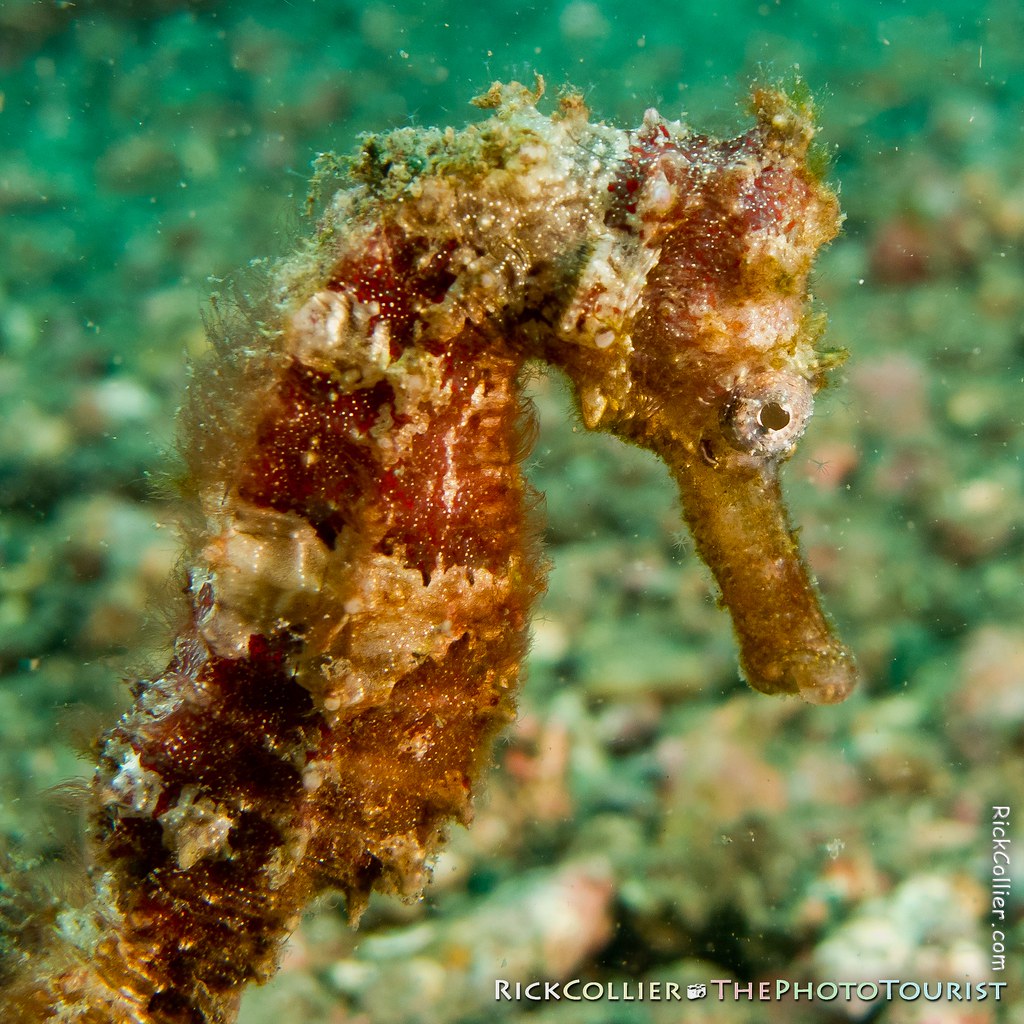- Home
- Categories
- Subscribe
- Contact
- Image Archive
- Search
-
Search
* Photo archive search opens a new tab or window
...or...
-
 “Red Seahorse“ |
I’ve loved seahorses since I was a kid — and still do. As recently as last fall, Nancy and I happened to be visiting an aquarium and were captivated by the seahorse display. We must have watched that one relatively small tank for a half an hour. Like everybody, we eagerly look for and point out seahorses, whenever we see one in a fish tank or aquarium. They’re unusual and improbable. (By what accident did this creature come to be?) They move slowly and gracefully. They are not strong or fast swimmers. They’re calm and inoffensive … in fact, they even seem friendly. They’re cute.
I’ve seen seahorses in the wild before, mostly in the Caribbean around reefs or sea grass beds, where there is plenty of stuff in which to “hide” and anchor themselves by wrapping their tail around a projecting stem or branch. I’ve never seen one really swimming in the wild. I didn’t really expect to see many seahorses in the “muck diving” capital of the world, the Lembeh Strait. The bottom in the strait is sand and mostly featureless; there is often a current; and places where a seahorse might “hide” or attach itself are few and far between.
|
I was wrong: In fact, seahorses are pretty common in the Lembeh Strait. They are often seen out on the sandy bottom, with nothing nearby to which they might plausibly attach. The ones we saw were pretty large, too: Most were five inches (12 cm) or more. They don’t swim upright and gracefully on Lembeh’s unprotected sandy bottom; rather, their tails extend along the sand, they tilt forward, and current and surge rock them back and forth. Still, the head is up and the seahorse moves purposefully — always away from the diver. Trying to get a good photo of a seahorse in the wild can be a challenge — especially if the seahorse is moving freely along a featureless sandy plain. Somehow, the little creatures always contrive to face away from the huge camera looming near them. Swimming free, they extend their tail, lay down on the bottom, duck their heads, and turn away. If holding on to something, they turn away and tuck their head down, into the bottom and away from the camera. |
 “Pale Horse“ |
Eventually I learned that it is possible to “herd” a seahorse. I could position the camera and hold that still with one hand and then extend the other bare hand gently around the seahorse. The little critter would turn himself away from the moving hand as it got closer to him. It wasn’t always easy to hold the camera and take the photo with one hand and at the same time “herd” the seahorse with the other hand — all the while without touching the animal, stirring up sand, or interfering with my own shot. But it did work a couple times. (And not once did I actually touch the seahorse: No seahorses were harmed in the pursuit of these pictures!)
(Top Image [“Red Seahorse”]: Canon G11 in Ikelite housing with two DS-125 strobes on TTL control; macro setting; integrated lens at 10.8mm; ISO 200; f/4.5; 1/60 sec.)
(Lower image [“Pale Horse”]: Same camera and strobes; macro setting; lens at 12.1mm; ISO 80; f/3.5; 1/60 sec.)
.
Horses in the Sand is a post from: thePhotoTourist.com.
Images and text copyright © Rick Collier and thePhotoTourist. All rights reserved.